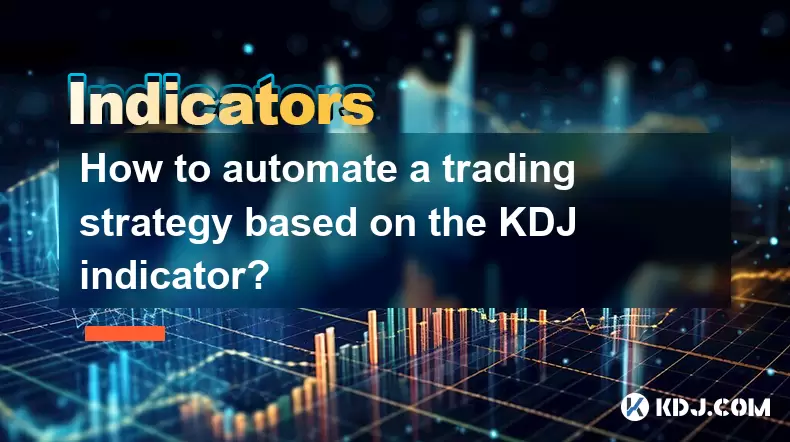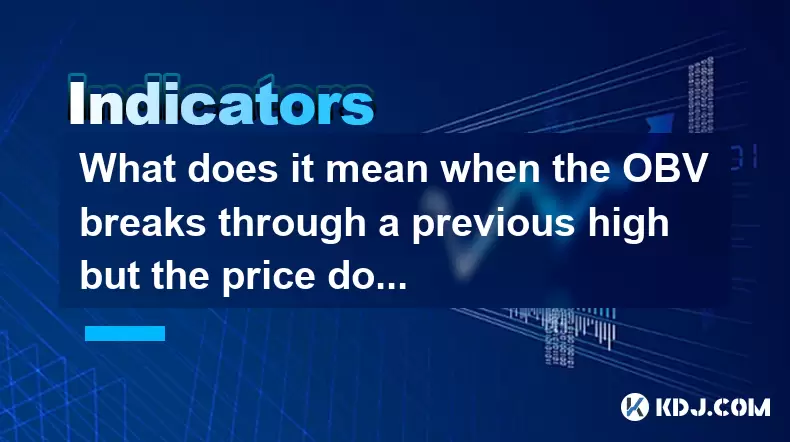-
 Bitcoin
Bitcoin $116700
0.24% -
 Ethereum
Ethereum $3973
4.34% -
 XRP
XRP $3.283
7.68% -
 Tether USDt
Tether USDt $1.000
0.01% -
 BNB
BNB $789.8
2.27% -
 Solana
Solana $176.2
3.31% -
 USDC
USDC $0.9999
0.00% -
 Dogecoin
Dogecoin $0.2238
5.14% -
 TRON
TRON $0.3389
-0.51% -
 Cardano
Cardano $0.7907
4.03% -
 Stellar
Stellar $0.4527
10.02% -
 Hyperliquid
Hyperliquid $41.07
4.27% -
 Sui
Sui $3.794
1.77% -
 Chainlink
Chainlink $19.49
10.40% -
 Bitcoin Cash
Bitcoin Cash $580.9
0.74% -
 Hedera
Hedera $0.2617
4.32% -
 Avalanche
Avalanche $23.41
3.67% -
 Ethena USDe
Ethena USDe $1.001
-0.03% -
 Litecoin
Litecoin $122.4
1.38% -
 Toncoin
Toncoin $3.364
1.49% -
 UNUS SED LEO
UNUS SED LEO $8.988
0.37% -
 Shiba Inu
Shiba Inu $0.00001295
2.82% -
 Uniswap
Uniswap $10.62
5.75% -
 Polkadot
Polkadot $3.922
4.46% -
 Dai
Dai $1.000
0.01% -
 Bitget Token
Bitget Token $4.494
2.15% -
 Monero
Monero $268.0
-1.30% -
 Cronos
Cronos $0.1523
3.68% -
 Pepe
Pepe $0.00001127
4.43% -
 Aave
Aave $285.4
4.85%
How to automate a trading strategy based on the KDJ indicator?
The KDJ indicator, derived from the Stochastic Oscillator, uses %K, %D, and %J lines to identify overbought/oversold levels and generate trade signals via crossovers, making it ideal for automated crypto trading strategies when combined with API-connected bots and proper risk controls.
Aug 08, 2025 at 11:42 pm

Understanding the KDJ Indicator and Its Components
The KDJ indicator is a momentum oscillator widely used in technical analysis within the cryptocurrency trading community. It is derived from the Stochastic Oscillator and consists of three lines: %K, %D, and %J. The %K line represents the current closing price relative to the high-low range over a specified period, typically 9 periods. The %D line is a moving average of %K, usually a 3-period simple moving average, while the %J line is calculated as 3 × %K – 2 × %D, making it more sensitive to price changes.
Traders use the KDJ to identify overbought and oversold conditions. When the %K and %D lines cross above 80, the market is considered overbought; below 20, it's oversold. Crossovers between %K and %D are used as potential entry or exit signals. For example, a %K crossing above %D in the oversold zone may signal a buy, while a %K crossing below %D in the overbought zone may indicate a sell.
In the context of automation, understanding these thresholds and crossover logic is essential for coding accurate trading rules. The indicator’s responsiveness makes it suitable for short-term trading strategies, especially in volatile crypto markets.
Selecting a Trading Platform for Automation
To automate a KDJ-based strategy, you must choose a platform that supports algorithmic trading and provides access to historical price data and real-time indicators. Popular options include Binance, Bybit, KuCoin, and third-party tools like TradingView, 3Commas, or MetaTrader with crypto brokers.
If using TradingView, you can write scripts in Pine Script to define your KDJ logic and set up alerts that trigger webhooks. These webhooks can be linked to exchanges via APIs to execute trades. Alternatively, platforms like Freqtrade or Hummingbot allow you to run custom Python-based bots locally, giving you full control over strategy execution.
Ensure the platform supports:
- Real-time KDJ calculation
- Webhook or API integration
- Backtesting capabilities
- Risk management features like stop-loss and take-profit
For example, in Freqtrade, you can define the KDJ indicator using the TA-Lib library or manually calculate it within the strategy file.
Defining the Trading Logic in Code
To automate the strategy, you need to translate the KDJ signals into executable code. Below is a conceptual breakdown using Python and the TA-Lib library:
- Import necessary libraries:
import talib,import numpy as np,import ccxt - Fetch historical price data using an exchange API like Binance:
exchange = ccxt.binance()ohlcv = exchange.fetch_ohlcv('BTC/USDT', '1h', limit=100) - Extract closing prices, highs, and lows:
close = np.array([x[4] for x in ohlcv])high = np.array([x[2] for x in ohlcv])low = np.array([x[1] for x in ohlcv]) - Calculate the KDJ values:
%K, %D = talib.STOCH(high, low, close, fastk_period=9, slowk_period=3, slowd_period=3)%J = 3 %K - 2 %D - Define entry and exit conditions:
- Buy when %K < 20, %D < 20, and %K crosses above %D
- Sell when %K > 80, %D > 80, and %K crosses below %D
These conditions can be implemented using boolean checks and lagged values to detect crossovers.
Connecting to Exchange via API
To execute trades automatically, you must connect your script to a cryptocurrency exchange using its API. Most exchanges provide REST and WebSocket APIs. Here’s how to set it up on Binance:
- Create an API key and secret on the Binance website under API Management
- Enable Spot & Margin Trading permissions and restrict IP if possible
- Install the ccxt library:
pip install ccxt - Initialize the exchange in code:
exchange = ccxt.binance({ 'apiKey': 'your_api_key', 'secret': 'your_secret_key', 'enableRateLimit': True }) - Test the connection:
balance = exchange.fetch_balance() - Place orders using:
exchange.create_market_buy_order('BTC/USDT', amount)
orexchange.create_limit_sell_order('ETH/USDT', amount, price)
Ensure you handle exceptions like network errors or insufficient balance. Use sandbox mode if available to test without real funds.
Backtesting and Optimizing the Strategy
Before deploying live, backtest the KDJ strategy using historical data. In Freqtrade, you can run:freqtrade backtest --strategy KDJStrategy --timerange=20230101-20231231
Key metrics to evaluate include:
- Win rate: Percentage of profitable trades
- Profit factor: Gross profit divided by gross loss
- Maximum drawdown: Largest peak-to-trough decline
- Sharpe ratio: Risk-adjusted return
Optimize parameters like the lookback period (9, 14, 21), overbought/oversold thresholds (75/25 vs 80/20), and smoothing periods. Avoid overfitting by testing across multiple market conditions and assets. Use walk-forward analysis to validate consistency.
You can also add filters, such as requiring the price to be above a 50-period moving average for long entries, to reduce false signals.
Deploying and Monitoring the Bot
Once tested, deploy the bot on a VPS (Virtual Private Server) to ensure 24/7 operation. Use tools like PM2 or Docker to manage the process. Set up logging to record trades, errors, and indicator values.
Monitor performance through:
- Real-time dashboard (e.g., Grafana)
- Email or Telegram alerts for trade executions
- Regular review of trade history and P&L
Ensure the bot handles disconnections gracefully and re-authenticates when needed. Implement circuit breakers to halt trading if drawdown exceeds a threshold.
Frequently Asked Questions
Can the KDJ indicator be used on all cryptocurrency timeframes?
Yes, the KDJ indicator can be applied to any timeframe, from 1-minute charts to weekly intervals. However, shorter timeframes like 5m or 15m generate more signals but increase the risk of false positives due to market noise. Longer timeframes such as 4h or daily provide stronger, more reliable signals but fewer trading opportunities. Adjust the sensitivity by modifying the fastk_period and slowk_period values accordingly.
How do I prevent the bot from placing too many trades?
To reduce trade frequency, add cooldown periods after each trade. For example, disable new entries for 1 hour after a position is opened. You can also require confirmation from a secondary indicator, such as RSI or MACD, before executing. Another method is to only allow trades during specific market phases, like when volatility is above average or during high-volume hours.
What should I do if the API rate limit is exceeded?
Exceeding API rate limits can cause your bot to stop functioning. To avoid this, implement rate limiting in your code using delays between requests. The ccxt library has built-in rate limiting when enableRateLimit: True is set. You can also cache data and batch requests where possible. Monitor your usage via the exchange’s API dashboard and upgrade to a higher-tier account if necessary.
Is it safe to use third-party bots with my API keys?
Using third-party bots introduces security risks. Always use API keys with restricted permissions—never enable withdrawal rights. Use IP whitelisting to limit access to your server’s IP address. Prefer open-source bots like Freqtrade where you can audit the code. Avoid sharing your API secret and consider using subaccounts to limit fund exposure.
Disclaimer:info@kdj.com
The information provided is not trading advice. kdj.com does not assume any responsibility for any investments made based on the information provided in this article. Cryptocurrencies are highly volatile and it is highly recommended that you invest with caution after thorough research!
If you believe that the content used on this website infringes your copyright, please contact us immediately (info@kdj.com) and we will delete it promptly.
- Navigating the Crypto Market in 2025: Smart Decisions for the Meme Supercycle
- 2025-08-09 08:50:12
- DeFi, Tokenized Stocks, and NFTs: A Wild Ride in the Crypto Cosmos
- 2025-08-09 08:30:11
- AERO Price Skyrockets: Aerodrome Finance Sees Massive Surge Amid Coinbase Buzz
- 2025-08-09 08:55:19
- Coinbase, Cosmos, and dYdX: Navigating the Crypto Currents
- 2025-08-09 06:30:16
- BNB Price, Altcoins, and Predictions: What's the Buzz?
- 2025-08-09 06:30:16
- Crypto Presale Projects Primed for Gains in 2025: A New Yorker's Take
- 2025-08-09 06:50:15
Related knowledge

What does it mean when the Williams' oscillator repeatedly hits bottoms but fails to rebound?
Aug 09,2025 at 09:28am
Understanding the Williams %R OscillatorThe Williams %R oscillator, developed by Larry Williams, is a momentum indicator used in technical analysis to...

When the J line in the KDJ indicator suddenly turns downward after being continuously overbought, does it indicate a top?
Aug 09,2025 at 06:35am
Understanding the KDJ Indicator and Its ComponentsThe KDJ indicator is a momentum oscillator widely used in cryptocurrency technical analysis to ident...

What does it mean when the TRIX indicator suddenly diverges downward after a long period of convergence?
Aug 09,2025 at 12:56am
Understanding the TRIX Indicator in Cryptocurrency TradingThe TRIX indicator, or Triple Exponential Average, is a momentum oscillator used in technica...

What does it mean when the OBV breaks through a previous high but the price doesn't reach a new high?
Aug 09,2025 at 07:57am
Understanding the On-Balance Volume (OBV) IndicatorThe On-Balance Volume (OBV) is a technical analysis indicator that uses volume flow to predict chan...

Why is the rise limited after a MACD bottoming divergence?
Aug 09,2025 at 12:07am
Understanding MACD Bottoming Divergence in Cryptocurrency TradingThe MACD (Moving Average Convergence Divergence) is a widely used technical indicator...

What does it mean when the OBV continues to rise but the price is trading sideways?
Aug 08,2025 at 10:35pm
Understanding On-Balance Volume (OBV)On-Balance Volume (OBV) is a technical indicator that uses volume flow to predict changes in stock or cryptocurre...

What does it mean when the Williams' oscillator repeatedly hits bottoms but fails to rebound?
Aug 09,2025 at 09:28am
Understanding the Williams %R OscillatorThe Williams %R oscillator, developed by Larry Williams, is a momentum indicator used in technical analysis to...

When the J line in the KDJ indicator suddenly turns downward after being continuously overbought, does it indicate a top?
Aug 09,2025 at 06:35am
Understanding the KDJ Indicator and Its ComponentsThe KDJ indicator is a momentum oscillator widely used in cryptocurrency technical analysis to ident...

What does it mean when the TRIX indicator suddenly diverges downward after a long period of convergence?
Aug 09,2025 at 12:56am
Understanding the TRIX Indicator in Cryptocurrency TradingThe TRIX indicator, or Triple Exponential Average, is a momentum oscillator used in technica...

What does it mean when the OBV breaks through a previous high but the price doesn't reach a new high?
Aug 09,2025 at 07:57am
Understanding the On-Balance Volume (OBV) IndicatorThe On-Balance Volume (OBV) is a technical analysis indicator that uses volume flow to predict chan...

Why is the rise limited after a MACD bottoming divergence?
Aug 09,2025 at 12:07am
Understanding MACD Bottoming Divergence in Cryptocurrency TradingThe MACD (Moving Average Convergence Divergence) is a widely used technical indicator...

What does it mean when the OBV continues to rise but the price is trading sideways?
Aug 08,2025 at 10:35pm
Understanding On-Balance Volume (OBV)On-Balance Volume (OBV) is a technical indicator that uses volume flow to predict changes in stock or cryptocurre...
See all articles

























































































